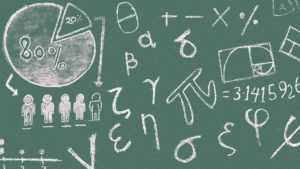Electrostatics is a fundamental branch of physics that deals with the study of electric charges at rest. It forms the foundation for understanding more complex electromagnetic phenomena and is crucial for success in JEE Main exams. This comprehensive guide will walk you through the key concepts, formulas, and problem-solving strategies in electrostatics, spanning from basic principles introduced in Class 8 to advanced topics covered in Class 12.
1. Fundamental Concepts:
1.1 Electric Charge:
Electric charge is a fundamental property of matter. There are two types of electric charges: positive and negative. The key characteristics of electric charges are:
- Like charges repel each other
- Unlike charges attract each other
- Charge is quantized (comes in discrete units)
- Charge is conserved (total charge in an isolated system remains constant)
1.2 Coulomb’s Law:
Coulomb’s law quantifies the electrostatic force between two point charges. It states that the force (F) between two charges (q1 and q2) is directly proportional to the product of their magnitudes and inversely proportional to the square of the distance (r) between them.
F = ke(q1q2) / r^2
Where ke is Coulomb’s constant (8.99 × 10^9 N·m^2/C^2)
Table 1: Coulomb’s Law in Different Media
| Medium | Coulomb’s Law Formula |
|---|---|
| Vacuum | F = ke(q1q2) / r^2 |
| Medium with dielectric constant K | F = ke(q1q2) / (Kr^2) |
1.3 Electric Field:
The electric field (E) at a point is defined as the force per unit charge experienced by a small positive test charge placed at that point. For a point charge Q:
E = ke(Q) / r^2
The direction of the electric field is radially outward for a positive charge and radially inward for a negative charge.
2. Advanced Concepts:
2.1 Electric Potential:
Electric potential (V) at a point in an electric field is the work done per unit charge in bringing a positive test charge from infinity to that point. For a point charge Q:
V = ke(Q) / r
2.2 Gauss’s Law:
Gauss’s law relates the electric flux through a closed surface to the charge enclosed by that surface. Mathematically:
∮E · dA = Qenc / ε0
Where E is the electric field, dA is the differential area vector, Qenc is the enclosed charge, and ε0 is the permittivity of free space.
Table 2: Applications of Gauss’s Law
| Charge Distribution | Electric Field Formula |
|---|---|
| Infinite line charge | E = λ / (2πε0r) |
| Infinite plane sheet | E = σ / (2ε0) |
| Spherical shell | E = 0 (inside), E = kQ/r^2 (outside) |
2.3 Capacitance:
Capacitance (C) is the ability of a system to store electric charge. For a parallel plate capacitor:
C = ε0A / d
Where A is the area of one plate, d is the separation between plates, and ε0 is the permittivity of free space.
2.4 Dielectrics:
Dielectrics are insulating materials that can be polarized by an applied electric field. When a dielectric is inserted between the plates of a capacitor, it increases the capacitance:
C’ = KC
Where K is the dielectric constant of the material.
3. Problem-Solving Strategies:
3.1 Coulomb’s Law and Electric Fields:
- Identify all charges and their positions
- Choose a coordinate system
- Apply superposition principle for multiple charges
- Use vector addition for forces or fields
3.2 Gauss’s Law:
- Identify symmetry in the charge distribution
- Choose an appropriate Gaussian surface
- Calculate the flux through the surface
- Relate flux to enclosed charge
3.3 Electric Potential:
- Choose a reference point (usually infinity)
- Calculate potential difference, not absolute potential
- Use the relation E = -∇V for field calculations
3.4 Capacitance:
- Identify series and parallel combinations
- Use C = Q/V for individual capacitors
- Apply rules for series (1/Ceq = 1/C1 + 1/C2 + …) and parallel (Ceq = C1 + C2 + …) combinations
1. Solved Examples:
Example 1: Electric Field Calculation
Problem: Three point charges are located at the vertices of an equilateral triangle with side length a. Two charges q1 = q2 = q are positive, while the third charge q3 = -q is negative. Calculate the electric field at the center of the triangle.
Solution:
Step 1: Due to symmetry, the x-components of the fields from q1 and q2 will cancel out.
Step 2: The y-components from all three charges will add up.
Step 3: The distance from each charge to the center is r = a / √3.
Step 4: The y-component of the field from each positive charge is:
Ey(+) = (ke q / r^2) * (√3/2) = (√3 ke q) / a^2
Step 5: The y-component from the negative charge is:
Ey(-) = (ke q / r^2) = (3 ke q) / a^2
Step 6: The total field is:
E = 2Ey(+) – Ey(-) = (2√3 – 3)(ke q / a^2)
Example 2: Capacitor with Dielectric
Problem: A parallel plate capacitor with plate area A and separation d is filled with two dielectric slabs of equal thickness d/2. The dielectric constants are K1 and K2. Find the equivalent capacitance.
Solution:
Step 1: Consider the two dielectric slabs as two capacitors in series.
Step 2: Capacitance of each slab:
C1 = K1ε0A / (d/2) = 2K1ε0A / d
C2 = K2ε0A / (d/2) = 2K2ε0A / d
Step 3: Equivalent capacitance for series combination:
1/Ceq = 1/C1 + 1/C2 = d/(2K1ε0A) + d/(2K2ε0A)
Step 4: Simplify:
Ceq = 2ε0A(K1K2) / (K1 + K2)d
5. Common Mistakes to Avoid:
- Forgetting to consider the vector nature of electric fields and forces
- Incorrect application of Gauss’s law for non-symmetric charge distributions
- Mixing up electric field and electric potential in calculations
- Neglecting the effect of dielectrics in capacitance problems
6. Advanced Topics for JEE Advanced:
6.1 Electric Dipoles:
An electric dipole consists of two equal and opposite charges separated by a small distance. The dipole moment p = qd, where d is the displacement vector from negative to positive charge.
6.2 Polarization:
Polarization is the process of aligning electric dipoles in a material under the influence of an external electric field. The polarization vector P is related to the electric field E by:
P = ε0(K-1)E
6.3 Boundary Conditions:
At the boundary between two dielectrics:
- The tangential component of E is continuous
- The normal component of D (electric displacement field) is continuous
Practice Problems:
1. A point charge Q is placed at the center of a cubic Gaussian surface. What is the flux through one face of the cube?
Answer: Q / 6ε0
2. Two large conducting plates are separated by 5 mm and connected to a 100 V battery. What is the magnitude of the electric field between the plates?
Answer: 20,000 V/m
3. A parallel plate capacitor has a capacitance of 2 μF. If the plate separation is doubled and a dielectric of constant K = 5 is inserted between the plates, what is the new capacitance?
Answer: 5 μF
4. An electric dipole with dipole moment p is placed in a uniform electric field E. What is the maximum torque experienced by the dipole?
Answer: pE
5. Table of Important Formulas:
| Concept | Formula |
|---|---|
| Coulomb’s Law | F = ke(q1q2) / r^2 |
| Electric Field (point charge) | E = ke(Q) / r^2 |
| Electric Potential (point charge) | V = ke(Q) / r |
| Gauss’s Law | ∮E · dA = Qenc / ε0 |
| Capacitance (parallel plate) | C = ε0A / d |
| Energy stored in capacitor | U = (1/2)CV^2 |
| Dielectric effect on capacitance | C’ = KC |
| Dipole moment | p = qd |
| Torque on dipole | τ = p × E |
Conclusion:
Mastering electrostatics requires a deep understanding of fundamental concepts and extensive practice in problem-solving. This comprehensive guide covers the essential topics, formulas, and strategies needed for success in JEE Main physics. Remember to approach each problem systematically, applying the appropriate concepts and equations. Regular practice with a variety of problems will help build your intuition and problem-solving skills. As you prepare, make use of additional resources such as textbooks, online tutorials, and practice exams to further reinforce your understanding of electrostatics.



